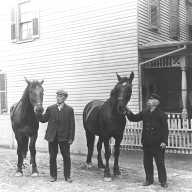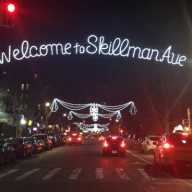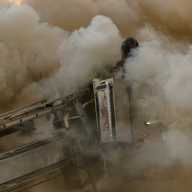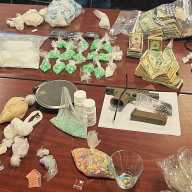Queens stroke patients will get priority attention from the Citys 911 ambulances under terms of an agreement reached last week between the New York City Fire Department and a medical/legislative task force formed by Assemblywoman Nettie Mayersohn of Flushing and Borough President Claire Shulman, The Queens Courier has learned.
The action, designed to improve the survival chances of stroke patients and limit disabilities, was authorized by EMS (Emergency Medical Services) which ordered its ambulances on Nov. 28, to begin notifying hospital emergency departments by radio that stroke patients were on the way and to prepare for their arrival.
The pilot program that may spread to other boroughs was originally proposed in a series of articles by The Courier. The concept was embraced by Mayersohn who joined with Shulman in setting up the borough task force including county physicians and legislators.
"There is a three-hour window of opportunity in effect for stroke patients," said Dr. Emilio Oribe, director of neurological services at New York Hospital Queens Medical Center. "This system of prior notification can save lives and lessen disabilities stroke patients may suffer."
The advance warning is seen as crucial since it allows emergency rooms to mobilize needed specialists, book the patient for MRI (magnetic resonance imaging) and other tests necessary to evaluate patients for the new "clot-busting" drugs such as tPa.
In its order to EMS units in Queens, dated Nov. 22, the Fire Department agreed that stroke patients would benefit under the new system.
"Notification prior to arrival of the patient will allow attending physicians crucial time to prepare for the patients arrival. In turn, the patient will be afforded a greater chance of survival, and recovery, through the prompt evaluation of the patient, and where appropriate, administration of medications."
The Fire Department directive instructs ambulance crews to notify the dispatcher that they are transporting a patent suspected of suffering a cerebral vascular accident (stroke) and provide details of the patient’s condition (including vital signs and age.) as well as the estimated time of arrival at the hospital.
The announcement by the NYFD drew enthusiastic support from members of the Queens medical/legislative task force that had been hammering out an agreement. At first, the Queens group had sought the installation of cell phones in ambulances to put emergency medical technicians in direct contact with hospital emergency departments. But EMS officials assured the Queens group that ambulance dispatchers would be notified about stroke cases and would telephone the emergency rooms directly.
Dr. Thomas Kwiatkowski, chairman of the Emergency Department at Long Island Jewish Medical Center, was confident the new system would save lives of stroke patients and limit their disabilities. He said he was looking forward to receiving the "outcome data" to see how many lives would be saved under the new plan.
Kwiatkowski described himself as an advocate of designated stroke centers facilities that maintain a trained stroke team including radiologists, technicians and the equipment they need to treat patients on a 24-hour basis.
"We dont have this system operating now in New York City," he said. "Today ambulances bring stroke patients to the nearest hospital. Patients can ask to be taken to another hospital, but it has to be within 10 minutes of the patients home."
On Aug. 11, within days after the Courier articles appeared, Shulman wrote to Fire Commissioner Thomas Von Essen demanding improvements in the care of Queens stroke patients. She noted that the borough has the largest elderly population in the city and many of these individuals were at risk of stroke.
"There have been major advances in the treatment of stroke cases," she told Von Essen. "Its imperative to get them into the emergency room more quickly now that the drug tPA has proven successful in treating these cases and reducing disabilities."
Shulman formed the medical/legislative task force and then invited EMS and Fire Department officials to join them.






























